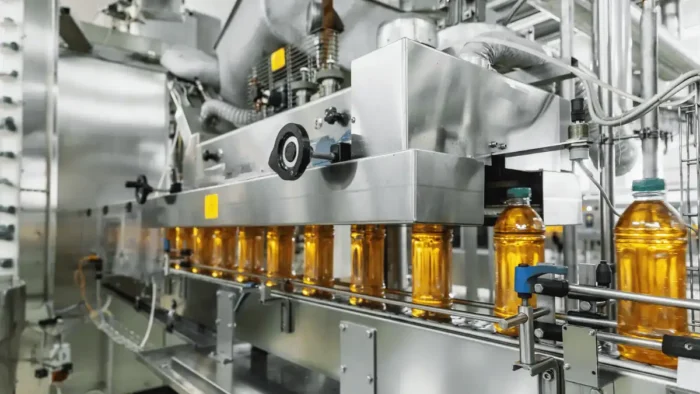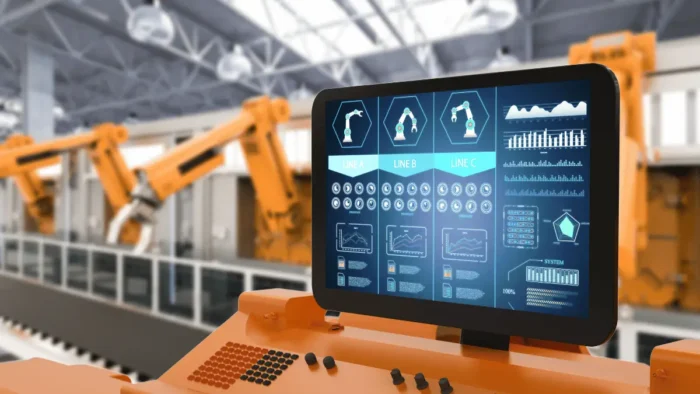Automation, a significant development in the industrial sector, brings a revolutionary change in improving productivity and facilitating processes. It functions as a robust tool, replacing manual labor with machines, reducing human error, and increasing efficiency. According to the Robotic Industries Association, there was a 1.6% increase in robot orders from North American companies in 2019 compared to 2018, indicating the growing influence of automation in the industrial sector.
With the help of generative AI, automation can lead to an increase of 0.2 to 3.3 percent annually in productivity growth, as per a report by McKinsey. But here’s an intriguing fact! Did you know that the first industrial robot, named Unimate, was installed in a General Motors plant in 1961? It was a single-arm machine designed for repetitive tasks that weighed almost an impressive two tons and could perform assembly line tasks quicker and more accurately than human workers.
This article will summarize some essential things that automation can bring to business productivity.
1. Reduced Downtime
Automated systems can operate around the clock without fatigue or breaks, significantly increasing productivity. Traditional manual labor often leads to downtime due to illness, injury, or even leaves. Automation eliminates these factors and ensures uninterrupted production, leading to higher output and revenue generation.
Granted, industrial automation may require a considerable investment, but the long-term gains and benefits far outweigh the initial cost. Especially in sectors where the production process is continuous, such as manufacturing and logistics, automation can substantially reduce downtime and ensure a constant flow of goods.
Related: Chat GPT: Essential Insights for Using AI Conversation Power
2. Increased Accuracy
Automation reduces the risk of possible human errors and increases the work output’s precision and consistency. Manual labor is prone to mistakes and can lead to costly errors, especially in complex or repetitive tasks. Automation reduces the chances of error, leading to better-quality products and lower business costs.
Furthermore, automation can improve data collection and analysis accuracy, resulting in more informed decision-making and better overall productivity.
Many industrial processes require precise measurements and calculations, which can be challenging for humans to perform accurately. Automation eliminates these challenges and provides consistent results every time.
3. Optimized Resource Utilization
Automation enables industries to optimize the use of resources, reduce waste, and promote sustainable practices. Automated systems can use sensors and data analysis to monitor and regulate processes to ensure maximum efficiency.
For example, in a manufacturing plant, automation can adjust the speed of machines based on demand, decreasing energy consumption and extending the lifespan of the equipment. In turn, this reduces costs for businesses while promoting environmentally friendly approaches.
Moreover, automation can also track and manage inventory levels, ensuring that resources are used efficiently and avoiding overproduction and waste.

4. Improved Safety
Automating dangerous tasks reduces the risk of accidents, maintaining a safer work environment. Using robots and machines in high-risk environments, such as hazardous material handling or welding, reduces the chances of human injury.
Moreover, with automation, employees can focus on supervising and monitoring processes instead of performing risky tasks. This ensures a safer workplace and promotes job satisfaction among employees. Automation can significantly reduce the risk of work-related injuries and illnesses for industries that require workers to handle heavy equipment or perform repetitive tasks.
5. Greater Flexibility
Automated systems can quickly adapt to new tasks or changes in the production process, improving the agility of industrial environments.
With traditional manual labor, changes in processes or products can often lead to delays and disruptions. However, automation allows industries to quickly adjust to new demands and optimize their production process accordingly. This flexibility also allows companies to meet changing market needs without compromising productivity. Today, adapting and responding quickly is crucial for success.
6. Faster Decision-Making
With the integration of generative AI, automation can assist in a quicker and more informed decision-making process based on real-time data analysis. Automation can provide valuable insights and recommendations for improving efficiency in industries with complex processes, such as logistics or supply chain management. This allows for a more proactive approach to problem-solving and reduces the time taken for decision-making.
Automation also eliminates the need for manual data entry and processing, freeing up time for workers to focus on other essential and higher-value tasks.
6 Increased Cost-Efficiency
By reducing labor costs and waste, automation can lead to substantial savings in the long term. While the initial investment may be high, automated systems can operate for extended periods without additional costs such as overtime pay or breaks. Automation also reduces the need for manual labor, which can lead to savings in employee training and turnover costs.
Additionally, companies can reduce operational costs and improve their bottom line with improved accuracy and resource utilization. Whether through increased productivity, optimized resource utilization, or reduced errors and downtime, automation can substantially enhance cost-efficiency in industrial environments.
Conclusion
In conclusion, automation offers many benefits for industrial environments, including increased productivity, accuracy, safety, and cost-efficiency. As technology advances, the potential for automation in various industries will only continue to grow. Companies must adopt automation and adapt their processes to stay competitive in today’s market. The industry can achieve higher productivity and success with the proper implementation and integration of automated systems.





